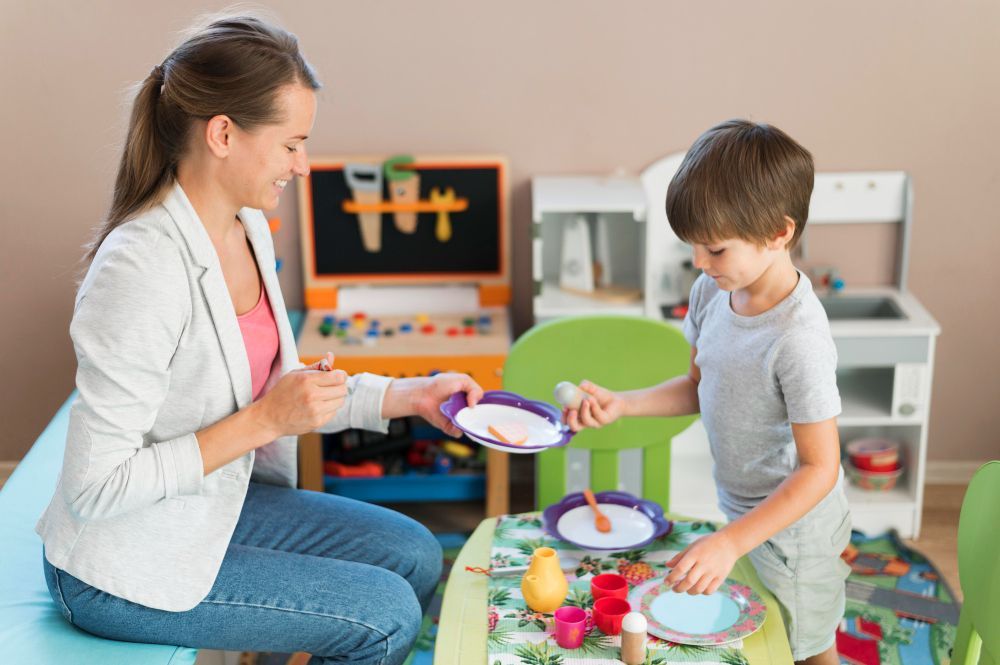how does play therapy work
Share this article:
Children don’t always have the words to express how they feel—but through play, they communicate in powerful ways.
In Naperville, play therapy is a trusted approach that helps kids process big emotions, behavior challenges, and trauma in a safe and engaging environment.

Let’s explore how it works and when it might be right for your child.
What Is Play Therapy?
Play therapy is a specialized counseling approach designed for children, typically between the ages of 3 and 12, where toys, games, art, and storytelling replace traditional talk therapy. Through these activities, children can express feelings, practice problem-solving, and develop emotional regulation.
Therapists observe behaviors and guide play intentionally to help children heal, grow, and better understand their world.
How It Works Step-by-Step?
1. Building Trust Through Play
At the start, the therapist creates a safe space filled with child-friendly tools like dolls, figures, sand trays, and art supplies. As the child becomes comfortable, the therapist observes patterns and behaviors during play sessions.
This step helps children feel emotionally secure while forming a bond with their therapist.
2. Identifying Emotional Themes
Without forcing conversation, therapists pick up on recurring themes—such as fear, anger, or control. A child dealing with anxiety might constantly build walls or hide toys. This gives insight into what the child is processing internally.
This step is especially valuable for parents seeking answers when words fall short—something addressed in-depth in child and teen therapy at FVI.
3. Encouraging Healthy Expression
Once trust is established, the therapist uses interactive techniques to gently guide the child toward emotional release and behavior change. This may include role-play, creative storytelling, or symbolic problem-solving during sessions.
These techniques are often combined with insights from psychological assessments when needed to deepen understanding.
4. Parent Involvement
Therapists regularly communicate with parents, offering feedback, updates, and practical tools to use at home. This supports consistency and helps reinforce progress made in session.
At Fox Valley Institute, families are also offered resources like family therapy when group dynamics are part of the challenge.
What Play Therapy Helps With?
Play therapy is widely used for:
- Anxiety or separation issues
- Grief and loss
- Trauma or abuse
- ADHD and impulse control
- Social difficulties or bullying
- Behavior challenges at home or school
Children in Naperville benefit especially when these issues show up subtly—like through withdrawal, aggression, or mood swings.
External Resource
For national insights on play therapy, visit the Association for Play Therapy.
FAQs
Is play therapy only for toddlers?
No—play therapy is usually ideal for children aged 3–12, but older teens may benefit from adapted forms of expressive therapy.
How many sessions does play therapy take?
Every child is different. Some may benefit in 6–8 sessions, while others might need longer, especially for trauma-based concerns.
Can play therapy be combined with parent coaching?
Yes—Naperville professionals often recommend combining sessions with tools from transformational coaching for families and parents.
What if my child doesn’t talk during sessions?
That’s okay! Talking isn’t the goal—the play itself communicates everything your child might be feeling or avoiding.
Do I stay in the room during therapy?
Typically, sessions are one-on-one with the child, but your therapist may include you in check-ins or offer family therapy if needed.
Connect with Us:
Connect with Us:



